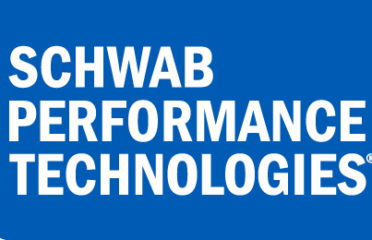
Portfolio Analysis and Performance Reporting:
Portfolio analysis and performance reporting in wealth management enable financial advisors to understand a client’s investment portfolio and the performance of those investments. Portfolio analysis considers asset allocation, diversification, and risk management factors.
Performance reporting provides historical data on an investor’s investments that have performed over time. By analyzing the portfolio and performance, wealth managers can provide advice and make recommendations on how to optimize the portfolio to maximize returns and minimize risk. Performance reporting helps investors better understand their investments and track progress against their financial goals.
Customer Expectations from Wealth Management Firms:
- How well are my investments performing?
- Will my money last?
- Am I diversified enough or taking too much risk?
- Is my portfolio positioned correctly for the future?
- How am I doing against my peer group?
- Based on my portfolio composition, can you spot new opportunities?
The Strategic Rationale for Rethinking Portfolio Analysis and Performance Reporting Platforms:
To remain competitive, wealth management firms must transform their portfolio analysis and performance reporting capabilities. Moreover, these firms must stay ahead of the curve with today’s ever-changing markets and increasing wealth consolidation. Here are some specific reasons why they need to evolve:
- Aligning Clients’ Goals and Objectives: A comprehensive performance reporting system must capture and analyze a client’s goals, objectives, constraints, and preferred risk profile so firms can align their strategies with their clients’ needs.
- Automation: With the proliferation of big data, automation has become necessary for efficiently analyzing client portfolios. Automated portfolio analysis and performance systems can quickly identify anomalies, risk exposures, and opportunities.
- Customization: Clients have different needs, so the software must be able to accommodate a wide range of preferences with customization options. This way, firms can provide personalized reports meeting each client’s requirements.
- Monitoring and Analysis: With the proper performance reporting capabilities, firms can monitor portfolio performance and make appropriate adjustments promptly. They can also use the data to conduct detailed analyses on returns, risk profiles, correlations, diversification, and other relevant metrics.
- Regulatory Compliance: With ever-changing regulations, wealth management firms must have the right tools to ensure compliance. Performance reporting systems can provide up-to-date information on regulatory guidelines and enforce compliance with regulations as needed.
- Competitive parity with Fintech firms. Fintechs have created a more sophisticated and flexible portfolio analysis and performance reporting systems without a legacy infrastructure and processes. Established wealth firms must transform and replatform to achieve parity.
- Enhance customer experience. Digital natives drive customers’ expectations about experiences; hence, sending a statement out every quarter will not suffice.
- Stem eroding customer trust in financial institutions. Last, the continued erosion of trust in financial institutions also warrants transparent, flexible, and on-demand reporting capabilities to showcase portfolio decomposition and performance analytics.
- Changing consumption patterns, including a rise in Smartphones and Tablets and comfort in online delivery.
Types of Portfolio Performance Reporting to Consider:
Portfolio performance reporting is used to measure the relative success of a portfolio in comparison with some benchmarks. There are numerous ways of measuring portfolio performance, each with strengths and weaknesses.
The Modified Dietz method examines the rate of return on an investment portfolio over a specific period and compares it to a benchmark index or other measure of market performance. It considers both the contributions made by investments and withdrawals from the portfolio during the measurement period. The Modified Dietz approach allows investors to compare actual returns against expected returns and make any appropriate adjustments to their portfolio accordingly.
The Black-Litterman model is another approach for calculating portfolio performance that considers asset allocation decisions and external factors such as market trends and volatility. This approach combines quantitative modeling with qualitative judgment to create a more accurate picture of portfolio performance.
The Dollar-weighted return measures investment performance that considers both contributions and withdrawals from the portfolio over time. In addition, it provides a measure of how well an investment has performed relative to expectations, taking into account any cashflows that have occurred in the period under review.
The Time-weighted return measures the rate of return for an investment portfolio over a specific period, independent from any external cashflows such as contributions or withdrawals during this period. This method removes external factors’ effect on returns, allowing for a more straightforward comparison between investments over varying lengths of time.
Finally, the Risk-adjusted return looks at how well an investment has performed relative to its level of risk. The Sharpe Ratio is a commonly used approach for calculating this performance measure, as it considers both returns and volatility when measuring performance against a benchmark.
A Typical Decomposition of Portfolio:
Investment portfolio decomposition and analysis can be broken down into five distinct types: asset class allocation, sector breakdown, geographic exposure, style allocation, and income projection.
Asset Class Allocation looks at the composition of the investment portfolio regarding various asset classes such as stocks, bonds, cash equivalents, or real estate. This type of analysis helps investors understand their investments’ risk/return profile by assessing how much they are exposed to each asset class.
Sector Breakdown examines how the investment portfolio is composed across sectors. It helps investors understand which industries their money is invested in and what risks they may face with different industry cycles.
Geographic exposure provides insight into the geographical regions in which an investor’s investments are diversified. In addition, this type of analysis helps investors understand the potential implications of geopolitical events on their portfolio and assess any currency risk associated with different countries.
Style Allocation looks at how an investment portfolio is composed across different styles, such as growth or value investing. This type of analysis can help investors better understand their investments’ size and return expectations.
Income Projection is a form of analysis used to estimate future passive income generated by the investment portfolio. By analyzing current holdings and expected returns, investors can understand how much passive income they will receive over time from their investments.
Standard Set of Portfolio Analytics:
Standard deviation measures the spread of returns, or volatility, and is used to analyze the risk associated with an investment portfolio. It indicates how far away from the mean (average) return one can expect in any given period.
Beta measures the volatility of a security relative to that of the overall market. Measuring deviations from the market average provides insight into whether a portfolio is more or less volatile than its peers and informs decisions on diversification strategies.
Performance attribution analysis looks at individual investments within a portfolio to determine which ones contribute positively or negatively to total return. This method helps investors identify opportunities for improving performance by highlighting which assets should remain in their portfolios and which may need replacing.
Value at Risk (VaR) is a risk-measurement technique to quantify the maximum loss expected in a given period. It helps investors and portfolio managers identify potential risks and decide how much capital to allocate for each investment based on their appetite for risk. By identifying potential losses before they occur, VaR ensures that portfolios are better protected from market downturns.
The Sharpe Ratio measures an investment or portfolio’s reward-to-risk ratio by considering its volatility and return. It is calculated by subtracting a risk-free asset’s rate from an investment’s return and then dividing it by its standard deviation. A higher Sharpe Ratio indicates that an investment or portfolio has been well managed by considering its risk exposure.
Jensen’s ratio is a measure of the performance of an investment compared to that of an index. It is calculated by subtracting the return on a benchmark from the return on an individual security and dividing it by the standard deviation of returns on that security. Higher Jensen’s ratios indicate better-than-average performance relative to the market index.
When accounting for risk levels, the Treynor Ratio is used to evaluate how well a portfolio manager performs relative to their peers. It measures how much extra return (alpha) an investor can expect to earn for each unit of risk taken on in a portfolio. A higher Treynor Ratio indicates that a portfolio manager has generated more return than the market with less risk and is therefore deemed to have performed better than their peers.
Features and Functionality of Portfolio Analysis and Performance Reporting Platforms:
– Comprehensive visualization and customization of individual portfolios, including charts, graphs, and other graphics
– Sophisticated analytics to measure portfolio performance over time and versus benchmark indices
– Automatic generation of customizable reports on risk management, asset allocation, financial planning, marketing activities, and more
– Automation of manual operations such as data processing and calculations
– Ability to set up customized alerts for client notifications based on any event or data changes
– Integration with multiple sources like custodian banks, trading systems, research providers, etc. Automated data integration from external sources (e.g., custodians)
– Ability to customize workflows for standard processes such as rebalancing or tax loss harvesting.
– Client portal access for individual clients or advisors to review portfolio performance details and related information.
– High-security standards, including encryption, two-factor authentication, and data backup.
– Robust compliance tools with built-in support for regulatory requirements such as GDPR, MiFID II, etc.
– Support for scalability to handle large datasets like those encountered when factoring in international investments or multiple asset classes.
– Support for mobile devices and tablets to view portfolios on the go.
– Ability to customize reports or dashboards with corporate branding elements such as logos and colors.
– Support automated document generation from templates (e.g., tax forms).
– Comprehensive customer service offerings with online support, phone, and email for inquiries.
– Support for multiple languages to accommodate a wide range of users.
– Ability to generate customized presentations with charts and graphs to inform clients of upcoming changes or risk exposures.
– Artificial Intelligence capabilities include natural language processing (NLP) and machine learning (ML).
– Automated generation of portfolio fact sheets with important information and metrics like Sharpe ratio or tracking error.
– Tools to help firms attract new clients or manage existing relationships.
– Look through capabilities to see underlying securities in a fund.
– Integration with third-party systems such as customer relationship management (CRM) and payment tools.
– Customization options for users to set their preferences on display, sorting, and other features.
– Automated portfolio tracking and monitoring tools with advanced analytics capabilities.
– Support for backtesting of strategies to evaluate performance against historical data.
– Option to integrate the platform with an advisor’s website to provide clients online access.
– Advanced reporting capabilities, including drill-down functionalities and dashboard views.
– Functionality that allows users to compare portfolios across different criteria like risk level or asset type allocations
Criteria for Evaluating Portfolio Analysis and Performance Reporting Software Vendors:
In addition to the functionality mentioned above, here are a few other criteria for evaluating Performance Reporting Software vendors.
– Vendor business and financial viability
– Client references among peer group
– Analyst Firms’ ratings and rankings
– Ability to provide meaningful insights into portfolio performance, compared against local and global benchmarks
– Capacity to assess goals-based investments and track progress against those goals in real-time
– Analytical features that allow users to identify correlations between different asset classes or strategies
– Ability to generate reports with custom visualizations and integrated commentary
– Integration of market data from multiple sources for up-to-date analysis
– Advanced security protocols to ensure the safety and integrity of client data
– Ease of use for administrators, financial advisors, and other stakeholders
– Support for multiple languages, currencies, and regulations.
– Flexible pricing plans based on user needs and usage levels
– Professional services and consulting resources for customizing and implementing the software.
– Automated data import and export capabilities for quick implementation and scalability
– Access to in-depth educational resources, such as tutorials or webinars on using the software
– Provision of support from knowledgeable customer service teams.
– Compatibility with existing hardware infrastructure, including cloud hosting and architecture patterns.
– Ability to integrate with third-party applications for enhanced functionality.
– Robust customization tools enable users to tailor reports according to their requirements.
– Option to access mobile versions of the application, allowing investors greater control over their portfolios.
















